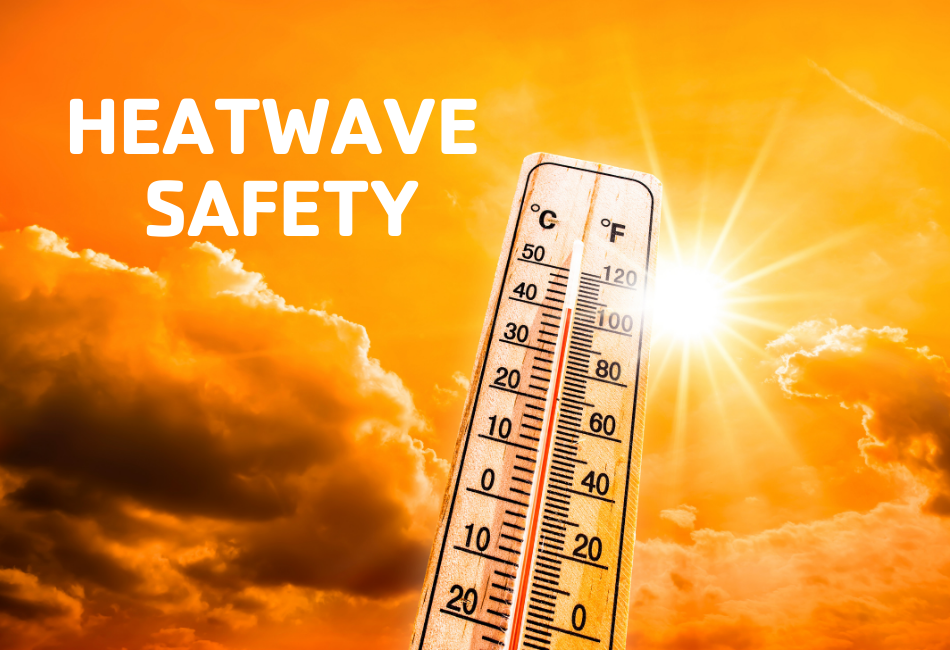● Important Geophysical phenomena such as earthquakes, Tsunami, Volcanic activity, cyclones etc.,
Q1. Define heatwave and its criteria and explain why it generally occurs in the north western plains of India?
Qualitatively, heat wave is a condition of air temperature which becomes fatal to the human body when exposed. Quantitatively, it is defined based on the temperature thresholds over a region in terms of actual temperature or its departure from normal. In certain countries it is defined in terms of the heat index based on temperature and humidity or based on extreme percentile of the temperatures.
In India it occurs mainly during March to June and in some rare cases even in July. The peak month of the heat wave over India is May.
Criterion for declaring heat wave
● Heat wave is considered if maximum temperature of a station reaches at least
● 40o C or more for Plains and at least 30o C or more for Hilly regions.
Based on Departure from Normal
● Heat Wave: Departure from normal is 4.5o C to 6.4o C
● Severe Heat Wave: Departure from normal is >6.4o C
Based on Actual Maximum Temperature
● Heat Wave: When actual maximum temperature ≥ 45o C
● Severe Heat Wave: When actual maximum temperature ≥47o C
If above criteria met at least in 2 stations in a Meteorological subdivision for at least two
consecutive days and it was declared on the second day.
Criterion for describing Heat Wave for coastal stations:
● When maximum temperature departure is 4.5o C or more from normal, Heat Wave may
● be described provided actual maximum temperature is 37o C or more.
Heat wave prone states over India:
● Heat waves generally occur over plains of northwest India, Central, East & north Peninsular India during March to June.
● It covers Punjab, Haryana, Delhi, Uttar Pradesh, Bihar, Jharkhand, West Bengal, Odisha, Madhya Pradesh, Rajasthan, Gujarat, parts of Maharashtra & Karnataka, Andhra Pradesh and Telangana.
● Sometimes it occurs over Tamilnadu & Kerala also.
● Heat waves adversely affect human and animal lives. However, maximum temperatures more than 45°C are observed mainly over Rajasthan and Vidarbha region in the month of May.
Health Impacts of Heat Waves:
The health impacts of Heat Waves typically involve dehydration, heat cramps, heat exhaustion and/or heat stroke. The signs and symptoms are as follows:
● Heat Cramps: Ederna (swelling) and Syncope (Fainting) generally accompanied by fever below 39o C
● Heat Exhaustion: Fatigue, weakness, dizziness, headache, nausea, vomiting, muscle cramps and sweating.
Heat Stroke: Body temperatures of 40o C or more along with delirium, seizures or coma. This is a potential fatal condition.
Prevalence of Heat wave in northwestern India:
● Transportation / Prevalence of hot dry air over a region (There should be a region of warm dry air and appropriate flow pattern for transporting hot air over the region).
● Absence of moisture in the upper atmosphere (As the presence of moisture restricts the temperature rise).
● The sky should be practically cloudless (To allow maximum insulation over the region).
● Large amplitude anticyclonic flow over the area: Heat waves generally develop over Northwest India and spread gradually eastwards & southwards but not westwards (since the prevailing winds during the season are westerly to north westerly).
● El Nino year: India is battling an El Niño wave that, in most years, dries up rainfall and contributes to elevated temperatures. Though the El Niño and its converse, La Niña, are cyclical, there is also the larger phenomenon of warming temperatures (El Niño) causing accelerated melting in the Arctic, a drying up of moisture-laden tropical wind and, consequently, fewer clouds, and, thus, dry, baking ground temperatures.
Heat Action Plans (HAPs):
● IMD in collaboration with National Disaster Management Authority (NDMA) and local health departments have started Heat Action Plans (HAPs) in many parts of the country to forewarn about the heat waves and also advising action to be taken during such occasions.
● At present the HAPs have been implemented in 23 States that are prone to high temperatures leading to heat-wave conditions.
● The heat wave bulletin is issued daily at 1600 hrs IST providing heat wave forecasts and warnings with 5-day forecasts.
● Impact of heat waves expected over a region is mentioned in colour codes (Green, Yellow, Orange and Red) and also the specific impact is described in the text as per the NDMA guidelines.
● Bulletins are issued by Meteorological Centres/Regional Meteorological Centres at district levels.
Measures to mitigate the effects of heatwaves in india:
● As a part of providing impact-based early warning services for various meteorological disaster events, India Meteorological Department (IMD) has prepared a Climate Hazards and Vulnerability Atlas of India for the thirteen most hazardous meteorological events including Heat Waves that cause loss of life, injury or other health impacts, property damage, loss of livelihoods and services.
● IMD has introduced various new platforms and strategies for dissemination of its forecast and warning services in addition to existing print and electronic media and email services.
● IMD is now conveying heat wave information with the help of daily and weekly video messages for easy understanding of stakeholders. Lot of emphasis is placed on social media to disseminate the warning messages such as YouTube, Facebook, WhatsApp, X (formerly twitter), Instagram etc.
● Dedicated State website has been operationalized to give district wise and localised information on heat wave warning services. Sector specific bulletins with respect to heat waves are also provided such as for the health sector to prepare for the potential transmission of vector borne diseases and for the agriculture sector to support interventions to avoid any loss of productivity.
Conclusion: Heatwaves in the northwestern plains of India are primarily driven by a combination of geographical factors, climatic conditions, delayed monsoon onset, atmospheric patterns, and urbanisation, making the region particularly susceptible to prolonged periods of extreme heat during the summer months.
Source The Hindu
https://epaper.thehindu.com/ccidist-ws/th/th_chennai/issues/78345/OPS/G5FCL2VSG.1+GMRCL32LP.1.html

